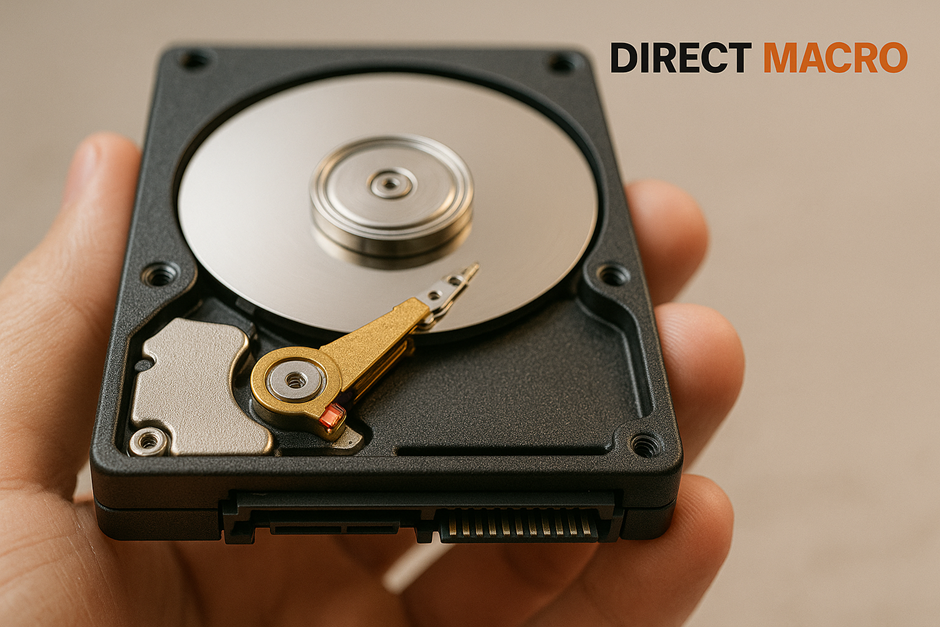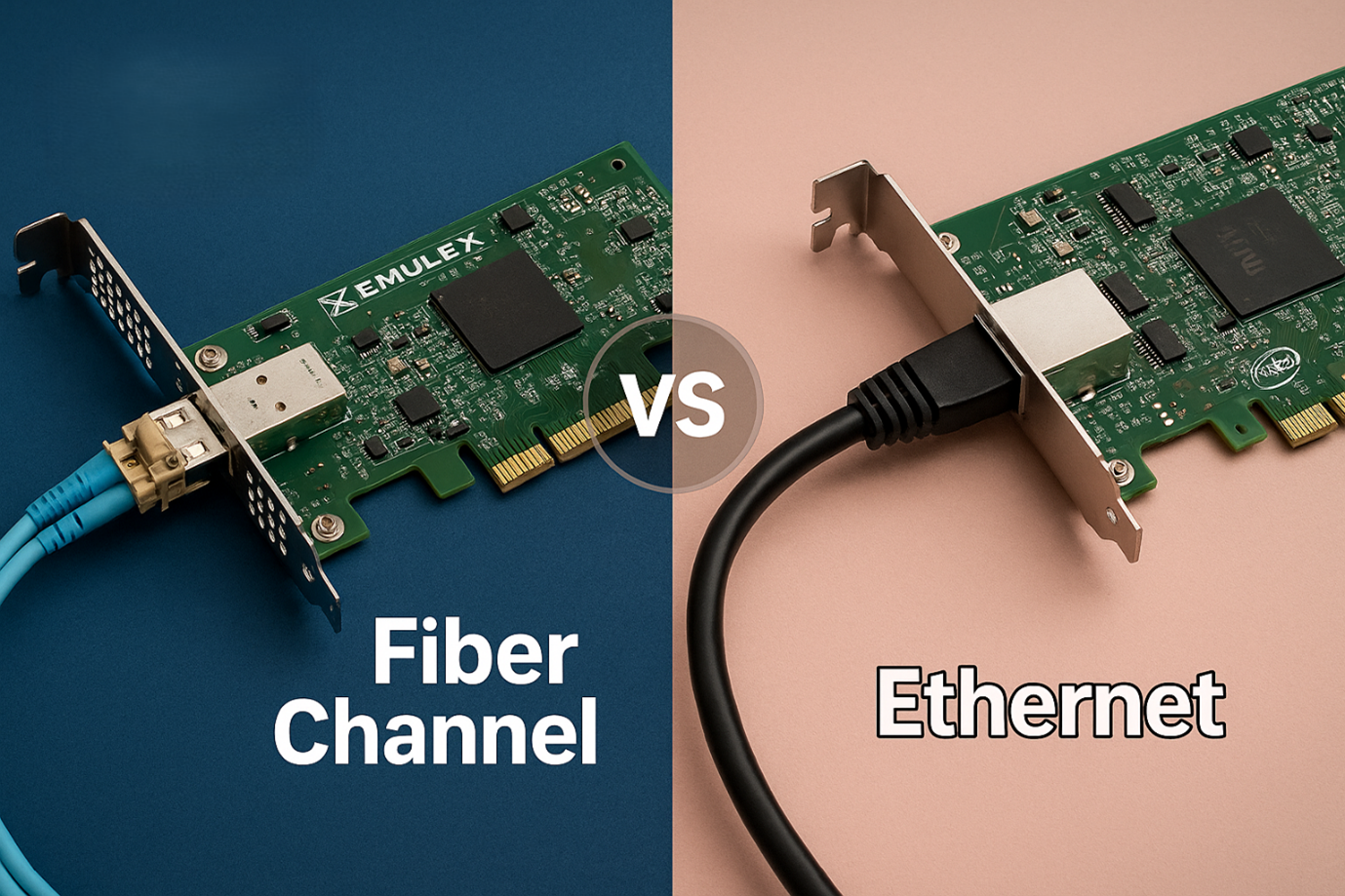The Next Leap in Data Storage – How HAMR Hard Drive Technology Is Changing Everything?
In this digital-first world, we are generating data at a record-breaking pace. This demand is driven by AI, cloud computing, IoT devices, and high-resolution video streaming. However, our requirements for storage capacity are skyrocketing. An older technology, like conventional hard drives, cannot keep up with the demand.
That’s where HAMR hard drives (heat-assisted magnetic recording) technology comes in. HAMR is a groundbreaking innovation in data storage technology, offering greater storage capacity with blazing speeds and unmatched reliability. HAMR-based hard drives are changing the future of storage for enterprises, hyperscale data centers, and even power users.
What Is HAMR? A Quick Primer
HAMR (Heat-Assisted Magnetic Recording) is an emerging recording technology that addresses one of the significant issues of traditional HDDs such as magnetic grain size.
How Does It Work?
HDDs have platters that spin and store data magnetically underneath them. While the storage data has the potential to increase, the magnetic grains on the disks surface become small and unstable which make it harder to store data.
HAMR solves this by:
-
Using A Nano-Scale Laser Diode to Briefly Heat a Tiny Region of the Platter
As the platter spins, a laser diode located on the recording head emits a precisely focused burst of heat, lasting for a picosecond (one trillionth of a second), to a microscopic spot on the platter. The laser’s spot is only a few dozen nanometres in diameter, much smaller than the writing head itself. This heats the specific area to over 400°C (750°F).
-
This Temporary Heating Makes the Grains More Receptive to Magnetic Changes
Under typical atmospheric temperature, the platter’s magnetic grains have a very stable magnetic environment, which makes it hard to “write” data onto them. However, once they are heated, their coercivity (ability to resist demagnetization) decreases significantly. This temporarily condition allows the writing head can easily change the magnetic grains’ orientation, so a bit of data (0 or 1) with a much stronger magnetic field than would be possible at room temperature.
-
Once Cooled, The Bits Remain Locked in Place, Enabling Higher Areal Density
The heating is so brief that the spot cools down practically right away after the laser passes, going back to its stable state. The new magnetic orientation is then “locked” in place, making it a permanent and trustworthy data point. This new technology lets HAMR hard disk drives hold more data per square inch than ever before, without losing precision.
This new technology lets manufacturers make use of magnetically stable media that could never be written to using conventional techniques, paving the way for unprecedented areal density and a new era of data storage.
Why HAMR Means Faster Performance?
HDDs have had slower performance than SSDs for a long time, but HAMR hard drives are making strides by improving throughput, latency, and overall efficiency.
Key Performance Gains
-
Up to 275 MB/s Transfer Speeds
The best improvement is in sequential reading and writing, which can reach 275 MB/s transfer speeds. The new Seagate HAMR-based hard drives have nearly doubled sustained data transfer rates when compared to conventional HDDs. This is because the drive reads more data from a specific physical region in one spin. This improvement is significant for large-file transfers, backups, and even streaming media. This increased throughput is game changing.
-
Lower Latency
HAMR hard drives speed work much faster because they can precisely control where and how data is written. Writing data to smaller, more focused areas reduces the time it takes for the read/write head to move, which helps lower latency. This improvement is essential for programs that need faster response times, like hosting virtual machines and database transactions, even though it is not as low as an SSD.
-
Optimized for High-Performance Workloads
HAMR’s better IOPS (Input/Output Operations Per Second) performance makes high-density drives very important for big data analytics, AI model training, virtualization, and cloud hosting. These demanding applications can process information faster because they can access a larger pool of data more efficiently. It directly speeds up operations and slows down processing time.
For companies that deal with petabytes of data, these performance improvements allow for faster operations, reduced processing time, and lower infrastructure costs.
Elevating Capacity: Why HAMR Is Essential in the Data Age?

Driven by video streaming, generative AI, or even blockchain, today’s workloads require massive amounts of storage. With data growing exponentially, HAMR really is a one-stop solution.
Storage Capacities Today and Tomorrow
-
Current Models
The 30TB and 36TB HAMR hard drives are already in use, shipping and delivering unthinkable capacities that were previously unimaginable. These drives enable data centers to triple their storage density without adding more facility/server racks.
-
Short-Term Roadmap
Predictions for 40TB HAMR-based hard drives to be in use by 2026 are unprecedented for scalability. Cloud service providers and large enterprises that are heavily reliant on the infrastructure investment, agility, and cloud service usability need continuous scalability optimally.
-
Future Projections
Seagate has projected 100TB HAMR drives by 2030, targeting ultra-high-density storage without additional server racks. Enabling the storage of terabytes worth of data, such emerging tech as the metaverse will be able to create and store data in real time.
HAMR serves as the basis for data centers of the next generation. Ultra-high-density storage enables companies to do more than just store piles of data; to do so economically and physically, HAMR provides a fundamental leap.
HAMR Hard Drive Reliability – Designed for Continuous Uptime
Without dependable trustworthiness, speed and capacity are meaningless, and HAMR’s drive for reliability is one of their biggest strengths. New technology often comes with concerns about reliability, but HAMR has been specially designed and thoroughly tested to meet the rigorous requirements of enterprise-level storage. The parts are made to endure the specific challenges posed by the heat assisted magnetic recording process to ensure data accuracy over the long term.
Why HAMR Is More Reliable?
-
Extensive Testing
Before hitting the market, HAMR hard disk drives go through billions of read/write cycles in real-world scenarios. Manufacturers simulate years of use in a controlled environment to identify and eliminate potential failure points. It ensures that the drives can handle the continuous 24/7 operation required in data centers.
-
Advanced Glass Platters
Unlike traditional hard drives that use aluminum platters, HAMR drives utilize a new, more robust material. The glass platters used in HAMR drives not only withstand the high temperatures caused by the laser during the read/write process, but they also maintain their long-term stability and structural integrity.
-
MACH.2 Dual-Actuator Technology
Multiple HAMR drives use Seagate’s dual-arm technology, where the read/write head assembly is split into two separate arms. With this, the drive can perform two separate data processes simultaneously. It enhances load balancing, gives more consistent performance, and is essential for critical operations because if one actuator fails, the other is still functional and can provide redundancy.
What are the HAMR-based hard drives for?
HAMR-based hard drives are engineered for mission-critical environments where downtime isn’t an option. Their reliability is a key factor in their adoption by cloud providers and large enterprises, where a single drive failure can have cascading effects.
Efficiency and Sustainability: Lower Costs, Greener Data Centers
Energy efficiency and sustainability are essential considerations as data centers grow. In this area, HAMR hard drives also provide essential benefits.
Key Advantages
-
Lower Energy Consumption per TB
HAMR drives reduce the total energy footprint by enabling the storage of more data on fewer drives. A single 40TB HAMR drive can replace two 20TB traditional HDDs. This consolidation decreases the total power consumption, resulting in a significant reduction in electricity expenses and helps cost saving.
-
Cooling Cost Reduction
Fewer drives result in less heat output, reducing cooling requirements. The more densely packed a data center is, the more heat it produces, necessitating costly and energy-intensive cooling systems. By reducing the number of drives required for a given capacity, HAMR reduces overall heat load, allowing data centers to operate more efficiently and sustainably.
-
Smaller Carbon Footprint
Hyperscale data centers can achieve environmental compliance while retaining maximum capacity. The combination of lower energy consumption and cooling requirements allows data centers to increase storage capacity while leaving a smaller carbon footprint, aligning with global sustainability initiatives and corporate environmental responsibilities.
In short, HAMR delivers more storage per watt, making it ideal for scalable and eco-friendly storage infrastructures.
HAMR-Based Hard Drive Roadmap: What’s Coming Next?
HAMR is more than just a small upgrade. It is the base for new storage technologies that will come out in the next ten years. The technology can grow and has a clear path for future growth, which will make it the best in all fields. The roadmap below gives us a look at the future of data storage, even though it may change.
| Year | Projected Capacity | Target Audience |
| 2025 | 40TB Drives | Enterprise & data centers |
| 2027 | 50TB Drives | AI/ML workloads, hyperscale storage |
| 2030 | 100TB Drives | Large-scale archives & advanced AI |
This roadmap shows a steady rise in capacity, which is made possible by ongoing improvements in the HAMR hard drive technology. With each leap, it will get cheaper, faster, and easier to get, making sure that it stays the best in all fields. The 100TB mark is very important because it will change the way cold storage and large-scale data archives work, making it possible to store petabytes of data for a lot less money than it costs today.
Who Benefits Most from HAMR?
Everyone will benefit from HAMR in the long run, but those who use it first will benefit the most. The technology is made for places where data scale, speed, and efficiency are very important.
Industries Leveraging HAMR
- Hyperscale Data Centers
AWS, Google, and Azure will increase rack density while lowering operational costs. The ability to fit more storage into each rack reduces real estate, power, and cooling costs, which are some of the biggest costs for these businesses.
- AI and Machine Learning
High-speed storage increases AI training and inference tasks. For training, AI models often need to access huge datasets. HAMR hard disk drive technology is an example of a fast, high-capacity storage solution that can reduce the time required to train these models, which speeds up innovation.
- Video Streaming and Gaming
Companies that make games and streaming services like Netflix can easily handle huge media libraries. These fields create and store petabytes of content, and HAMR is a cheap way to manage this data while making sure that users can get to it quickly.
- Enterprise Backup and Archival
Because HAMR costs less per TB, it makes large-scale retention strategies cheaper. Companies in regulated fields, like finance and healthcare, must retain data for years. HAMR is a scalable and affordable way to meet these long-term storage needs.
HAMR technology is changing the way data is stored and shared at all levels, from big companies to new businesses.
HAMR vs. Other Storage Technologies
Let’s compare HAMR to regular HDDs and SSDs to get a better idea of how useful it is. Each technology has its own strengths and weaknesses, but HAMR stands out because it has a unique set of features that make it the best choice for a certain, and growing, market segment.
| Feature | Traditional HDD | HAMR Hard Drive | NVMe SSD |
| Max Capacity (2025) | ~22TB | 40TB | ~8TB |
| Transfer Speeds | ~160MB/s | Up to 275MB/s | 3500MB/s+ |
| Cost per TB | Low | Low | High |
| Reliability | Standard | Enterprise-grade | High |
| Best Use Case | Budget storage | High-capacity, scalable storage | Speed-critical workloads |
This comparison shows that HAMR is not meant to be a faster, lower-capacity alternative to SSDs. Instead, it has the best combination of speed, capacity, and cost-effectiveness for enterprise and cloud storage. This makes it the best choice for managing large amounts of data when SSDs would be too expensive.
Conclusion: The Future of Data Storage
With the increase in global data, HAMR hard drive technology stand out as the go-to solution for the upcoming challenges. Here is why HAMR drives are blazing fast:
- No extra physical space is needed, hence amazing storage capacity.
- Transfer speeds are blazing fast for demanding tasks.
- Enterprise-grade reliability tested for stringent requirements.
- Next-gen data centers enabled with sustainable energy efficiency.
From AI-driven businesses to cloud hyperscalers, HAMR hard drives are the future of scalable, economical and eco-friendly storage.
Nowadays, businesses are prompted to tackle future data demands. For those businesses, upgrading to HAMR based hard drives is not an option, it is an absolute necessity.
FAQs
Q1. Is HAMR hard drive technology safe?
Yes. HAMR uses a low-power laser that is carefully controlled and doesn’t damage the integrity of the data. It has also passed a lot of tests to make sure it works. The heating process is so short and focused that it doesn’t affect the data around it or the drive’s long-term stability.
Q2. How does HAMR compare to SSDs?
SSDs are faster, but HAMR-based hard drives have much more space and cost less per TB, making them perfect for long-term bulk storage. These two technologies work well together, not against each other. SSDs are best for data that is hot and often accessed, while HAMR is best for data that is perfect for warm or cold data archives.
Q3. Can existing systems support HAMR drives?
Of course. HAMR drives work with standard SATA and SAS interfaces, so they can be plugged in and used right away in most data centers environments. You don’t need any special hardware or software to add them to your current setup.
Q4. What’s the expected HAMR hard drive speed?
Current HAMR models can transfer data at speeds of up to 275MB/s for long periods of time. Future models are expected to go over 300MB/s. This is a significant step from the 160MB/s speed of a standard hard drive.
Q5. Will HAMR replace traditional HDDs?
Yes. As storage capacities grow and prices drop, HAMR-based hard drives will become the norm for enterprise storage. For any use that needs high density and efficiency, traditional HDDs will become useless because of their better capacity and performance.
Do you need advice on buying or selling hardware? Fill out the form and we will return.

Sales & Support
(855) 483-7810
We respond within 48 hours on all weekdays
Opening hours
Monday to thursday: 08.30-16.30
Friday: 08.30-15.30








